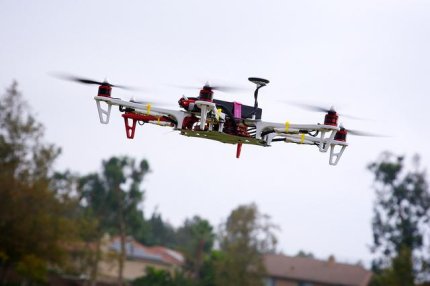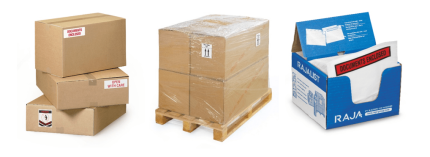What protective packaging material should I use?
Fragile items need special attention when you’re considering the logistics of transporting them any long distance. Understanding what protective packaging material to use depends on what you are packaging, what you are packaging it in and what you are packaging it for. The shape of the item, the box it is going in and whether it is being shipped or stored will all dictate how you pack it and with what.
Here we take a look at the range of protective packaging materials available and what we would recommend they work best for.
What protective packaging material to use when packing something for storage, transport or shipping is dictated by what you are packing and what kind of journey it is going to go on.
There are a range of protective packaging materials available, each suited to protect different items, from cardboard protective packaging to protective foam packaging to paper protective packaging. You can even get inflatable protective packaging for those goods that require extra shielding.
Each is suited to different packaging requirements and some work better with some packaged goods than others. The key thing, however, is that they all offer the level of protection that you need so that goods that are stored, stacked or shipped remain undamaged and in prime condition.
This means protecting them not just from bumps and impacts, but also from dust, dirt, moisture and even vibration.
So, what is available?
What is protective packaging?
First of all, what is protective packaging? According to Grainger Know-how, the protective packaging definition is packaging “designed purposely to shield mailed items from any physical harm and damage. In transport, packages are subject to dropping, rough handling and movement from vehicles, making them prone to damage”.
It is important to not confuse protective packaging with packaging. To store or ship items, you need a box or container. These are not strictly speaking protective packaging. Boxes can be reinforced and made from protective materials, but they are in themselves not protective packaging.
Protective packaging is usually packing material that is added to the box or wrapped around the items that go into the box to offer padding, shock absorption or shielding from dust and dirt.
The kind of rough handling, vibration or the environment in which the goods are to be stored or transported determines what kind of protective packaging you need to use and what material it needs to be made from.
Protective packaging materials
There is a wide variety of protective packaging materials, each suited to specific packaging demands.
Protective foam packaging is a versatile solution (Image: RAJA)
Protective foam packaging is often the one type of protective packaging that immediately springs to mind and is one of the most versatile when it comes to offering protection from impacts, vibration and, to some extend, moisture and dirt.
But there is more to foam packaging than meets the eye. For starters, it comes in a wide variety of forms.
Protective foam sheets and blocks offer different levels of protection (Image: RAJA)
There are sheets of thin foam that can be used to wrap around items for some basic protection from abrasion and bumps, right up to blocks of foam that can be used to pad out a package to give it full impact resistance and heavily shield the goods inside.
Foam edge and corner protectors offers specific protection (Image: RAJA)
Foam packaging also comes in shapes that neatly protect delicate edges and corners. U-profile protectors wrap around the corners, while L-profile protectors prevent edge damage and fit snugly around the sharp edges of products up to two metres long. Foam U-corner protectors give corners protection and support – as well as protecting the things around them from the sharp corner themselves.
Moisture resistant and antistatic foam packaging have specific uses (Image: RAJA)
For more specific protection needs, there are moisture resistant edge packaging solutions that not only protect the edges of items, but also prevent egress of water. These are particularly useful when storing or shipping in humid conditions as they will retain their strength.
For the packaging of delicate electronics, there is also antistatic foam packaging, which offers the vibration and impact resistance of foam packaging, while also isolating the goods inside from static that can damage their sensitive micro-processor innards.
Polyurethane foam liners are ideal for lining cartons and boxes (Image: RAJA)
Polymer protective packaging such as polyurethane foam liners are ideal for transporting irregular shaped goods, such as tools, as they secure and stabilise the contents in a box thanks to their foamy protuberances.
They are flexible and bendy, can be cut to fit and, in these days of eco-friendliness, can be reused. They also comply with EU and US regulations, containing no CFC, HCFC, or heavy metals.
Bubble wrap is a flexible alternative (Image: RAJA)
Inflatable protective packaging such as bubble wrap is an ideal way to protect a wide range of items. Its is lightweight, flexible and can easily be cut to size makes it among the most flexible forms of protective packaging available.
Made from polyethylene, it is moisture and dirt-resistant and the tiny inflated air sacs offer a surprisingly robust amount of protection from knocks and impacts.
Bubble wrap comes on rolls or in pouches (Image: RAJA)
Available on rolls to cut to size or as handy pouches – many of which are self adhesive so are easy to seal – bubble wrap offers a lightweight, shock absorbent and abrasion resistant barrier. It can also be reused time and again and, when it has finished its days as a packaging material it is great fun to sit and pop the bubbles – before recycling it of course.
Bubble wrap is also available as 50% recycled and recycled (Image: RAJA)
Because it is made from polythene, bubble wrap is easy to recycle and is often made into more bubble wrap. Available as both 50% recycled/50% new, as well as totally recycled, this inflatable protective packaging solution is extremely environmentally friendly.
Paper protective packaging is on a roll (image: RAJA)
The final type of protective packaging material is paper. Paper protective packaging has myriad uses in business, from packaging items for shipping and storage, right through to offering protection and looking pretty for gifting.
Crinkle cut or Filla: two ways paper comes into play in protective packaging (Image: RAJA)
The simplest form of paper packaging is simple shredded card/paper or gap filling Filla paper. These offer simple protection from essentially scrunched up paper that can be moulded to fill the space around the packed items. Both are ideal for irregular items or for padding out boxes that are too large for all or some of the items therein.
Coloured crinkle cut paper makes for a nice gift experience (Image: RAJA)
Coloured crinkle cut paper has the added advantage that it can be used as part of the display of the goods, offering not only protection but also a nice unboxing experience – especially useful in ecommerce.
Corrugated card offers strength and protection (Image: RAJA)
Corrugate card – on rolls or in sheets – offers the advantages of paper, but with added strength and protection. The corrugations make the paper much stronger and, thanks to the air gaps, offers greater vibration and impact protection.
Waxed Kraft paper and anti-corrosion paper are for specialist use (Image: RAJA)
For more specialist packaging needs, there are several other types of protective paper packaging. For use with engineering pieces and for more moisture and dirt protection there are a range of waxed Kraft papers that prevent seeping and adsorption. For more specific anti-corrosion protection, there are a range of anti-corrosion papers that use a RustBan vapour control inhibitor (VCI) coating that are specifically for ferrous materials that are prone to rust and which need to be kept dry and dust free.
Want to know more about our wide range of protective packaging solutions?
For additional advice on a wide range of protective packaging, our Experts are here to help you find the right solutions and arrange next day delivery. Simply call us on 0800 542 44 28 or visit www.rajapack.co.uk









































